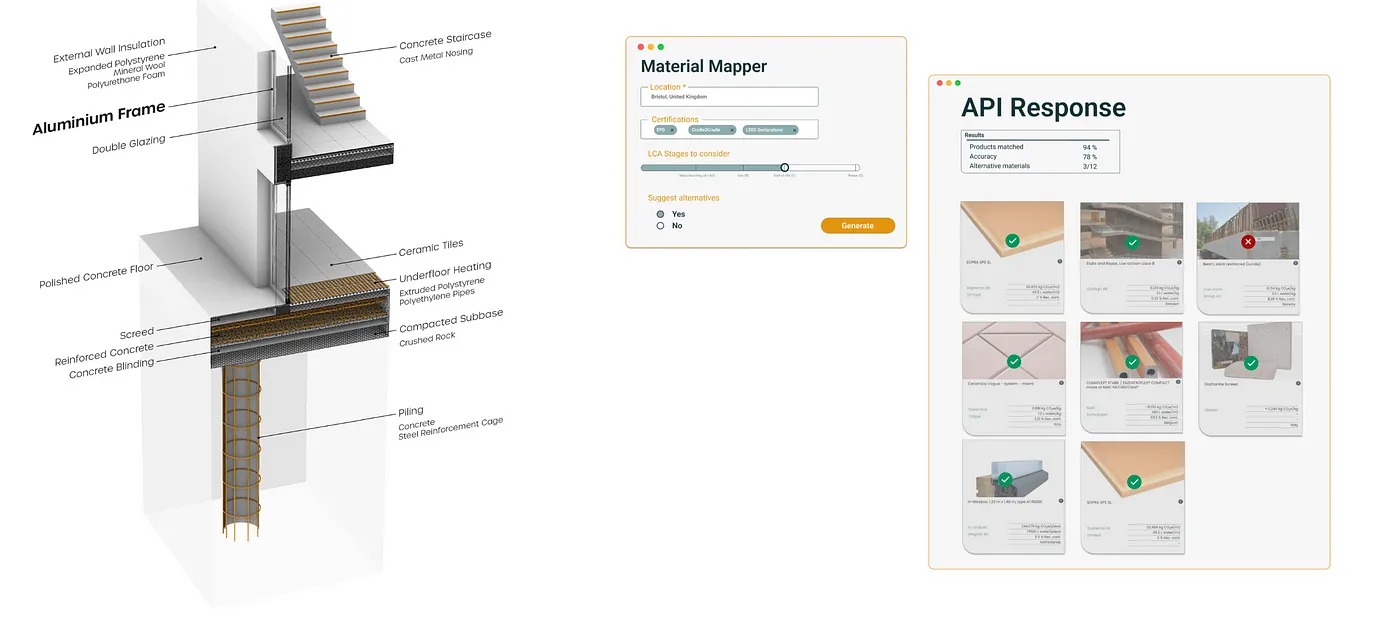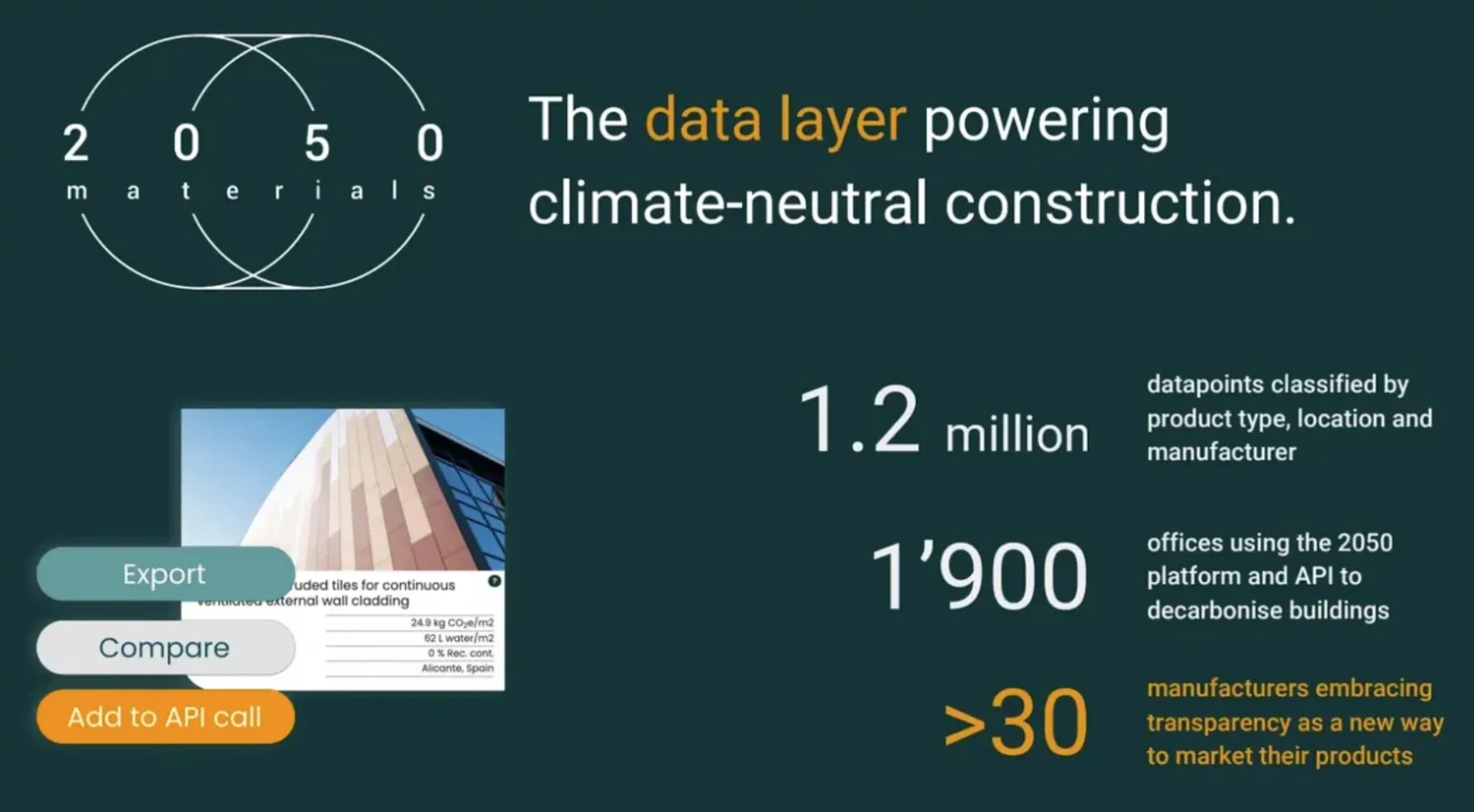Garbage in, Garbage out — Why your LCA tool is only as good as its data
Life Cycle Assessment (LCA) tools have emerged as vital instruments in the battle against carbon emissions in the construction industry. Architects, engineers, and construction professionals rely on these tools to measure the environmental impacts of their projects from start to finish. But here’s the catch: the effectiveness of these tools hinges on the quality and accuracy of the data they employ.
 As the saying goes, "garbage in, garbage out."
As the saying goes, "garbage in, garbage out."
Data, Data, Data

Construction is changing, and data is at the forefront of the change
Unfortunately, the state of data in the architecture, engineering, and construction (AEC) industry falls short of expectations. Most LCA tools today rely on limited databases that often fail to reflect the true reality of environmental impacts.
The lack of product-specific considerations, outdated and incomplete databases can end up misleading decision-making and impede progress towards sustainability.
 To put it simply: Relying on subpar data undermines the potential of LCA tools.
To put it simply: Relying on subpar data undermines the potential of LCA tools.
GIGO — Garbage in, garbage out
It all boils down to this: A carbon accounting process or LCA tool is only as good as the data it uses.
No amount of sophisticated software or advanced algorithms can compensate for flawed or outdated information. To drive meaningful change and achieve sustainability goals, the AEC industry must prioritize the development and utilization of high-quality data. In essence, accurate data is the bedrock upon which reliable LCA assessments are built.
What it takes to get rid of garbage
Creating a comprehensive and reliable database for the AEC industry requires several key components. Continuous quality assessments are crucial to ensure data accuracy and reliability. Interoperability between tools and systems enhances collaboration and avoids data silos. Network effects play a vital role in gathering additional data and improving overall accuracy.
By adopting a collaborative and API-first approach, the industry can curate a robust and comprehensive dataset.
Resist the temptation
While it may seem tempting for large organizations to build and maintain their own database, the last years have shown us that this ends up in an excel file that’s hard to maintain and update.
If we all try to collect data, we (1) duplicate efforts, (2) make it hard to compare results, (3) waste valuable resources and (4) divert attention from the ultimate goal of decarbonizing the construction sector.
Instead, a centralized approach, with collaboration between industry stakeholders and organizations like 2050 Materials, streamlines these efforts, ensures uniformity in the data structure, and lets organizations do what they do best — build better cities.

Tap into an existing database of >30,000 EPDs, technical data sheets and generic material databases
2050 is not that far away
Recognizing the pivotal role of reliable data, the 2050 Materials team has spent the last two years developing a cutting-edge data collection and verification engine, alongside the leading architects and contractors globally
Our data already supports the decarbonization efforts of multiple AEC companies as well as software tool providers.
Free Platform
2050’s platform hosts >30,000 products with EPDs and other sustainability certifications. It’s the easiest way to research, compare and find the right materials for your project, as well as run quick LCAs to understand the impact of your decisions.
API-first
But it doesn’t stop there.
If you already have a carbon process up and running, you don’t need to use (yet) another tool. The 2050 Materials database (and more) is available through an API which seamlessly integrates with other tools & processes, whether you’re an architect or a supply chain manager.

To find out more, reach out to us at api@2050-materials.com
Continue reading about the importance of data by going over this interesting article.
Related articles

Climate-Resilient Materials for the Built Environment: A Data-Centred Prime
As climate volatility intensifies, resilience metrics are fast becoming as critical as carbon data in material selection. This article outlines why adaptation is now a design imperative, how materials can be evaluated through a systems lens, and what KPIs project teams should demand. From self-healing concrete to fire-rated façades, we present a structured taxonomy of resilient materials, explain how to embed this intelligence into digital design workflows, and propose next steps for specification, benchmarking, and procurement.
Read more
The Most Interesting Low Carbon Products in Office Design
In this article and collection, we highlight 11 outstanding products that contribute to a lower carbon footprint in office design.
Read more
Top Low Carbon Building Boards: Performance, Benefits, and Use Cases
The building boards highlighted in this article and collection showcase low-carbon innovation in modern construction.
Read more